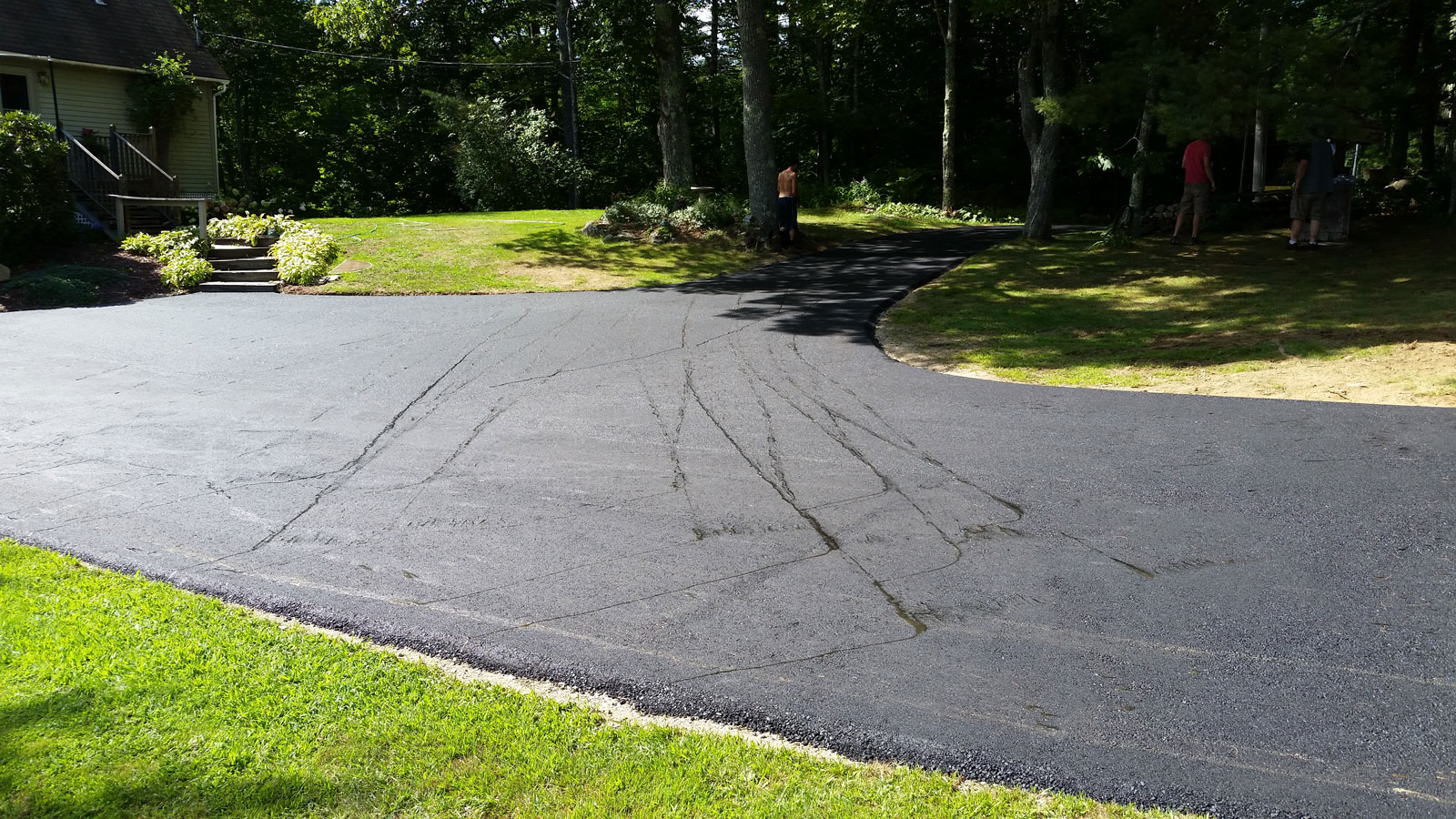Understanding Angled Parking: How Asphalt Sealing Enhances Commercial Great Deals
Understanding Angled Parking: How Asphalt Sealing Enhances Commercial Great Deals
Blog Article
Hot Mix Asphalt: A Sustainable Service for Pavement
Hot Mix Asphalt (HMA) has actually emerged as a leading lasting choice for sidewalk services, supplying a myriad of cutting-edge innovations and ecological benefits. As the need for eco-friendly building and construction practices expands, exploring the subtleties of HMA's sustainability can provide useful understandings into the future of sidewalk solutions.
Environmental Advantages of Hot Mix Asphalt

Furthermore, Hot Mix Asphalt aids to reduce city heat island impacts. Its dark shade takes in sunshine, reducing the amount of warmth reflected back into the ambience compared to lighter-colored pavements. This can decrease ambient temperatures in city locations, reducing the need for cooling and ultimately lowering power consumption.
On top of that, Warm Mix Asphalt adds to improved stormwater management. Its porous nature allows water to reenergize and penetrate the sidewalk groundwater supplies, lowering runoff and the risk of flooding. These environmental benefits make Hot Mix Asphalt a sustainable option for paving roads and freeways.
Power Performance in HMA Production
Is power performance an essential aspect in the manufacturing of Hot Mix Asphalt (HMA)? Definitely. Energy plays a considerable duty in the production of HMA, influencing both cost and environmental sustainability. One essential aspect of energy effectiveness in HMA manufacturing is the use of cozy mix asphalt (WMA) modern technologies (commercial parking lot paving). WMA permits the mixing and placement of asphalt at lower temperatures contrasted to conventional hot mix asphalt, causing minimized power intake throughout manufacturing. This procedure not only decreases fuel usage yet also lowers greenhouse gas emissions, making it an extra eco friendly choice.
In addition, innovations in plant modern technologies have led to more energy-efficient HMA manufacturing procedures. By enhancing power usage in HMA production, the sector can decrease its carbon footprint while keeping premium sidewalk products.
Recyclability of Hot Mix Asphalt
The recyclability of Hot Mix Asphalt (HMA) is an essential facet of its sustainability and long-term environmental influence. HMA is among the most recycled products in the United States, with over 100 million lots of reclaimed asphalt sidewalk (RAP) being recycled annually in brand-new sidewalk building and construction. Reusing HMA provides numerous environmental advantages, such as lowering the need for virgin materials, lowering energy usage during production, and reducing the quantity of waste sent to land fills.
The procedure of reusing HMA involves grating the existing sidewalk, squashing it into smaller sized pieces, and mixing it with brand-new accumulation and asphalt binder to create a recycled mix. On the whole, the recyclability of HMA plays a substantial function in promoting lasting techniques within the pavement sector.

Long-Term Performance of HMA
Asphalt sidewalks demonstrate durability and strength over a prolonged period, reflecting the lasting performance of Warm Mix read this post here Asphalt (HMA) The durability of HMA can be credited to its capability to withstand heavy traffic tons, harsh climate condition, and the impacts of aging. Studies have actually shown that properly designed and properly built HMA pavements can last for twenty years or more with regular upkeep. The trick to maximizing the commercial parking lot paving long-lasting performance of HMA lies in making use of top quality products, following finest methods in construction, and implementing reliable maintenance methods. Proper drain, regular inspections, and prompt repair work are crucial for protecting the structural honesty of HMA sidewalks in time. Furthermore, improvements in HMA technology, such as using polymer-modified binders and cozy mix asphalt, have additionally enhanced the longevity and longevity of HMA sidewalks. By prioritizing high quality building and upkeep techniques, HMA proceeds to verify itself as a sustainable and cost-effective service for resilient pavement framework.

HMA: Longevity and Sustainability
Showing both durability and sustainability, Warm Mix Asphalt (HMA) has actually become a foundation in the building and construction of lasting sidewalk infrastructures - commercial parking lot paving. HMA's durability stems from its capability to stand up to hefty lots, severe climate conditions, and high website traffic quantities, making it see this a reliable choice for streets, freeways, and airport terminal runways. The structure of HMA, which typically includes accumulations, binder, and filler, plays a crucial function in boosting its longevity and resistance to damage
Additionally, HMA's sustainability depends on its recyclability and energy-efficient manufacturing process. The capacity to reuse reclaimed asphalt pavement (RAP) in brand-new HMA mixtures reduces the demand for virgin products and reduces the environmental effect of sidewalk building and construction and upkeep. Additionally, the energy effectiveness of generating HMA exists in its lower mixing temperatures contrasted to various other sidewalk products, bring about minimized power consumption and greenhouse gas discharges.
Verdict
To conclude, hot mix asphalt (HMA) supplies a sustainable service for pavement with its eco-friendly attributes. HMA's recyclability, energy efficiency in production, and long-lasting toughness make it a green selection for roadway building and construction. By saving natural deposits, decreasing waste, and lowering greenhouse gas exhausts, HMA plays an essential role in promoting sustainability in facilities growth. Its capability to alleviate urban warmth island results even more underscores its significance in producing resistant and environmentally aware pavement systems.
HMA is one of the most recycled materials in the United States, with over 100 million bunches of redeemed asphalt sidewalk (RAP) being recycled annually in brand-new sidewalk construction.The process of reusing HMA entails milling the existing sidewalk, squashing it into smaller items, and blending it with brand-new accumulation and asphalt binder to create a recycled mix.Asphalt pavements show longevity and resilience over a prolonged duration, mirroring the long-term efficiency of Warm Mix Asphalt (HMA) Furthermore, innovations in HMA technology, such as the use of polymer-modified binders and cozy mix asphalt, have additionally enhanced the toughness and longevity of HMA sidewalks. The capacity to reuse recovered asphalt sidewalk (RAP) in new HMA mixes lowers the demand for virgin materials and decreases the environmental effect of sidewalk building and construction and maintenance.
Report this page